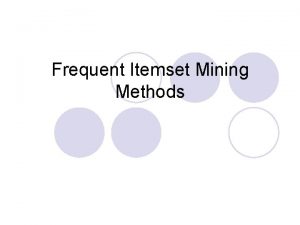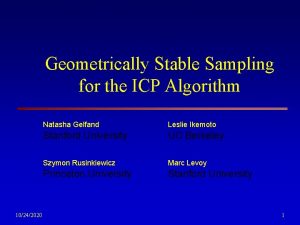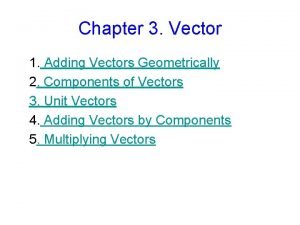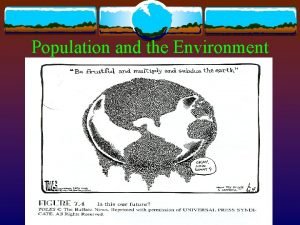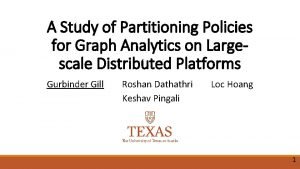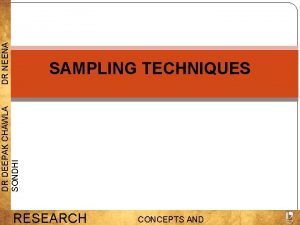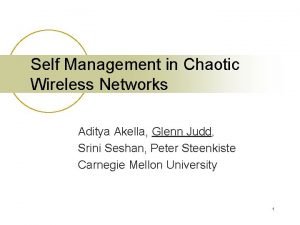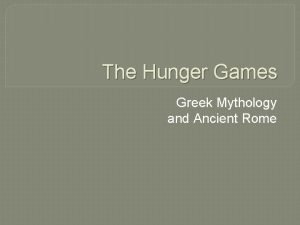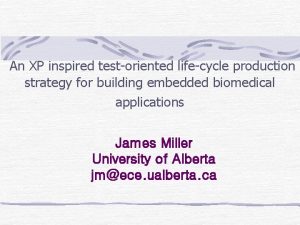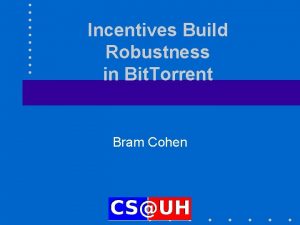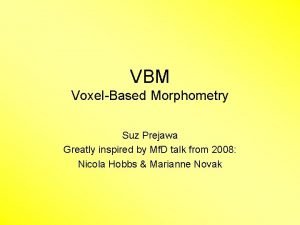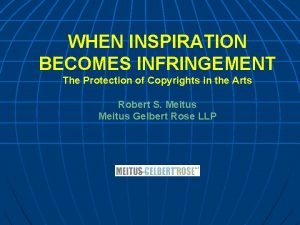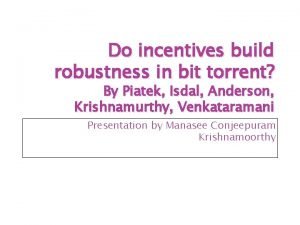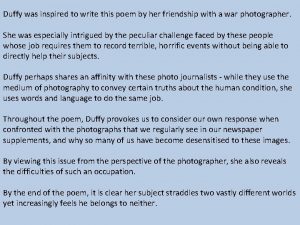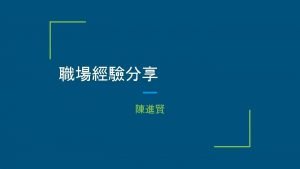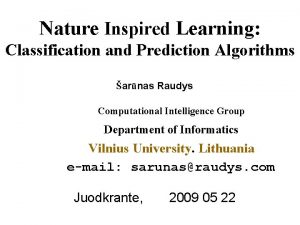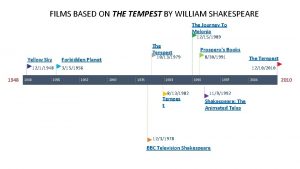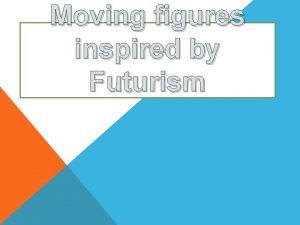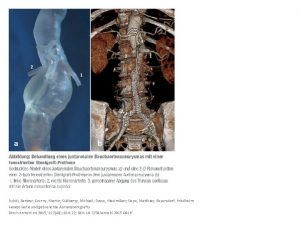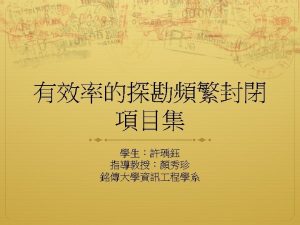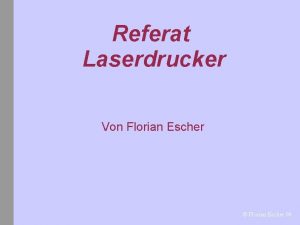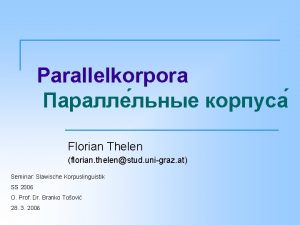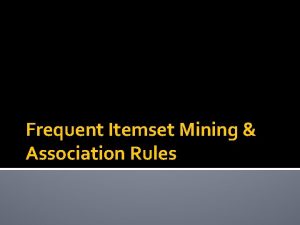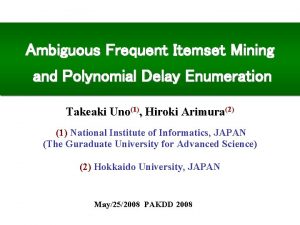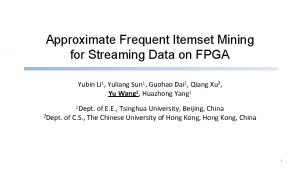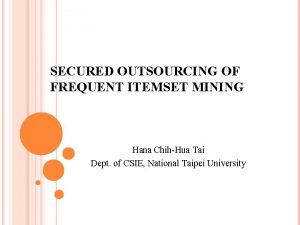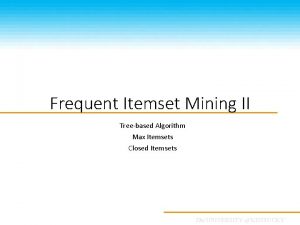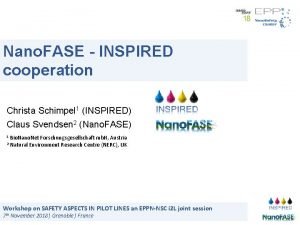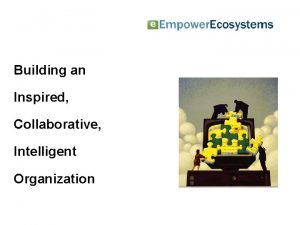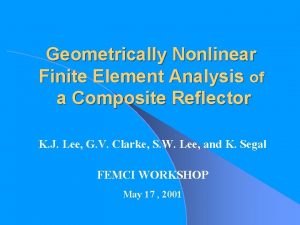Geometrically Inspired Itemset Mining Florian Verhein Sanjay Chawla










































- Slides: 42

Geometrically Inspired Itemset Mining* *Florian Verhein, Sanjay Chawla IEEE ICDM 2006

Outline ● Introduction ● Item Enumeration, Row Enumeration or ? ● Theoretical Framework ● Data Structure ● Algorithm – GLIMIT ● Complexity ● Evaluation

v FIM is the most time consuming part in ARM. v Traditionally, we use item enumeration type algorithms to mine the dataset for FIM. v Multiple passes of the original dataset. v Elements: T: transaction set, each transaction t ∈ T I: a set that contains all the items. t ⊂I FIM: an itemset i ⊂ T andσ(i) ≥ min. Sup

v Transpose the original dataset: v For each row, xi, contains transactions containing i. xi = { t. tid : t ∈ T ∧ i ∈ t }. v Here, we call xi an itemvector. i. e, it represent an item in the space spanned by the transactions.

An itemset I’ ⊂ I can also be represented as an itemvector. x. I’ = { t. tid : t ∈ T ∧ I’ ⊂ t } Exmaple: { 2, 4 } x 4 = { t 2, t 3 } is at g. x 2 = {t 1, t 2, t 3 } is at f. So: x{2, 4} = x 2 ∩ x 4 = { t 2, t 3 } is at g. Note: σ(x. I’) = |x. I’|

v Three key points: (1) An item or itemset can be represented by a vector. (2) Create vectors that represent itemsets by performing operations on the item -vector. (e. g. intersect itemvectors) (3) We can evaluate a measure by using a certain function on the itemvectors. (e. g. Size of an itemvector can be considered as the support of the itemset. ) ※ These three points can be abstracted to two functions and one operator. (g(), f(), o)

v Preliminary illustration For simplicity, we instantiate g(), f() and o for traditional FIM. Bottom-up scanning in transposed dataset row by row. (min. Sup = 1) v Check x 5 and x 4, {4} and {5} are frequent. v x{4, 5} = x 4 ∩ x 5 = {t 3} v {3} is frequent v x{3, 5} = x 3 ∩ x 5 = ∅ v x{3, 4} = x 3 ∩ x 4 = {t 2} v {3, 4, 5} is not frequent. v Continue with x 2 v

A single pass generate all frequent itemsets. v After processing n itemvectors corresponding to items in {1, 2, 3…n}, any itemset L⊂ {1, 2, 3…n} will have been generated. v Transposed format and itemvector allow all these to work. v

v Problem: Space: v Itemvectors take up significant space (as many as frequent itemsets, worst: 2|I| − 1) v Time: v Recomputation. (Not linear, actually exponential) v Example: x{1, 2, 3} is created, when x{1, 2, 3, 4} is needed, we want to use x{1, 2, 3} to compute it rather than recalculate x 1 ∩ x 2 ∩ x 3 ∩ x 4. v Challenge: v use little space while avoid re-computation. v

v GLIMIT (Geometrically Inspired Linear Itemset Mining In the Transpose. ) v Using time roughly linear to the number of itemset. v At worst using n’+�L/2�, n’ denote the number of 1 -frequent itemset, L is the length of the longest frequent itemset. v Based on these facts and the geometric inspiration of itemvector.

v Linear space and linear time. v One pass without candidate generation. v Based on itemvector framework.

Outline v Introduction v Item Enumeration, Row Enumeration or ? v Theoretical Framework v Data Structure v Algorithm – GLIMIT v Complexity v Evaluation

▲Item enumeration. Can prune effectively Based on anti-monotonic property. Apriori-like, effective When |T|>>|I| ▲Row enumeration. Intersect transactions (row based). Need to keep transposed table for counting purpose. Effective When |T|<<|I|

v GLIMIT v Hard to define what it really belongs to? v Need to keep the transposed table v Intersect itemvectors in the transposed table rather than intersect transections. v Search through the itemset space but scan original dataset column-wise. Transpose has never been considered by previous item enumeration approach. v Conclusion: it is still an item enumeration method.

Outline v Introduction v Item Enumeration, Row Enumeration or ? v Theoretical Framework v Data Structure v Algorithm – GLIMIT v Complexity v Evaluation

v Previously, we consider itemvectors as sets of transactions and perform intersection among them to generate longer itemsets. Also, cardinality function are used to evaluate the support of an itemvector. v Now, abstract these operations. v (Recall: x. I’ : itemvector for I’, or, set of transactions that contain I’)

v Suppose v We X is the space spanned by all x. I’ have: v Definition 1 g : X → Y is a transformation on the original itemvector to a different representation y. I’ = g(x. I’) in a new space Y. v The output is still an itemvector.

v Definition 2 ◦ is an operator on the transformed itemvectors so that y. I’∪I” = y. I’ ◦ y. I” = y. I” ◦ y. I’ v Definition 3 f : Y → R is a measure on itemsets, evaluated on transformed itemvectors. We write m. I’ = f(y. I’).

v Definition: v Suppose I’ = {i 1, . . . , iq}: v Interestingness(I’) =f(g(xi 1 )◦g(xi 2 )◦. . . ◦g(xiq )) v So for an interesting measure, we need to find the appropriate g(), ◦, f(). v For this presentation, we specifically consider support of an itemset, so the calculation can be represented using the above definitions as:

v g( ): bit-wise transformation v ◦ : Intersection ∩, bitwise AND v f( ) : | | or sum( ) v Example: v Itemvectors: x 1 = {t 1, t 2}, x 2 = {t 1, t 3} v y 1 = g(x 1) = 110, y 2 = g(x 2) = 101 v y 1 ◦ y 2 = y 1 ∩ y 2 = 100 = y{1, 2} v f = sum(y{1, 2}) = 1 = y 1 · y 2 v σ({1, 2}) = 1 v Actually dot product

v Obviously, different definitions of g(), ◦, f(). applies to different measures. v Definition: (not needed for support) v F : Rk → R is a measure on an itemset I’ that supports any composition of measures (provided by f(·)) on any number of subsets of I’. That is, MI’ = F(m. I’ 1, m. I’ 2…. . m. I’k), where, m. I’i = f(y. I’i), and I 1’, I 2’…Ik’ are k arbitrary subsets of I’. v Interestingness (I’) = F(m. I’ m ) I’ 1 2…. . k

v If k =1, F( ) = f( ). Support computation function v Example: (part of spatial colocation mining) The min. PI of an itemset I’ = {1, . . . , q} is min. PI(I’) = mini{σ(I’) /σ({i}) }. Suppose m. I’ = σ(I’). g( ), ◦ , f() are defined the same as before.

Outline v Introduction v Item Enumeration, Row Enumeration or ? v Theoretical Framework v Data Structure v Algorithm – GLIMIT v Complexity v Evaluation

v Structures v Prefix ● ● for GLIMIT: tree: Store itemset I’ as s sequence <i 1, i 2……. ik>, The order of the item is fixed. (an itemvector) Each node of the tree represent a sequence. (A prefix. Node) itemset = itemvector = sequence = prefix. Node Prefix. Node tuple = (parent, depth, m(M), item) How to recover a sequence?

v Fringe contains maximal itemsets. (for ARM)

Outline v Introduction v Item Enumeration, Row Enumeration or ? v Theoretical Framework v Data Structure v Algorithm – GLIMIT v Complexity v Evaluation

GLIMIT Depth first search and bottom up scanning. v 5 facts to help save space and avoid recomputation (time). v Fact 1: v Incrementally apply rule y. I’∪{i} = y. I’ ◦ yi. i. e, we only have to keep a single itemvector in memory when generating a child of a node. v Note, for root, we have to keep all the single itemvectors which represent the root’s child. v

v Fact 2: we only expand nodes which have one or more siblings below it. i. e. we check < ia, ib, . . . , ii, ij , ik> only if siblings < ia, ib, . . . , ii, ij > and < ia, ib, . . . , ii, ik> are in the prefix tree. Here, k > j v Fact 3: we use the depth first procedure, when a Prefix. Node p is created, then all Prefix. Nodes corresponding to the subsets of p’s itemset will already have been generated.

v Fact 4: If Prefix. Node (depth>1) have no children to expand, its itemvector will be abandoned. (Note apply for node with depth>1) v Fact 5: when a topmost child of node p is created or checked, delete the itemvector of p. (Note: apply for node with depth>1) v Fact 6: If we create a Prefix. Node p on the top- most branch, suppose p stands for <i 1, i 2, . . . , ik>, then itemvectors for the any single item in p can be deleted.




Outline v Introduction v Item Enumeration, Row Enumeration or ? v Theoretical Framework v Data Structure v Algorithm – GLIMIT v Complexity v Evaluation

v Time: roughly linear in the number of frequent itemsets. (Avoid recomputation) Building and mining happen simultaneously. v Space: we only consider itemvectors needed to save in memory. v Need to keep all itemvectors for single items until reaching the top-most. v Need to keep the itemvector for a node if not all children of it has been checked. v Now consider the worst case:

Suppose all itemsets are freqent. v n itemvectors for single items. �n/2�for the nodes on the path. (They are not fully expanded. ) v So, worst case is n + �n/2� − 1 v

v. A closer bound: Let n be the number of items, and n’ ≤ n be the number of frequent items. Let L ≤ n’ be the size of the largest itemset. GLIMIT uses at most n’ + �L/2�− 1 itemvectors of space. v Much better in practical situation. v Bottom up v Depth first from left to right

Outline v Introduction v Item Enumeration, Row Enumeration or ? v Theoretical Framework v Data Structure v Algorithm – GLIMIT v Complexity v Evaluation

v Two datasets with 100, 000 transactions each. v Contain 870 and 942 items respectively.

v When Min. Sup > a certain threshold. GLIMIT outperforms FPGrowth. v Reason: For FPGrowth: ●Build the tree and then conditional pattern ●Mine conditional FP-tree iteratively. (Search by following the links in the tree. ) ●It pays off if the minsupport is very small. But if minsupport is big, then space and time are wasted. )

v For GLIMIT: ●Use time and space as needed. ●One pass without generation, linear time and space. ●No resource-consuming mining procedures ●Beaten by FP Growth when Min. Sup is small because too many bitwise operation decrease the overall efficiency.

Last but not least… GLIMIT is somewhat trivial in this paper. v What is the main purpose? ★ Itemvectors in transaction space ★ A framework for operating on itemvectors ( Great flexibility in selecting measures and transformations on original data ) ★ New class of algorithms. Glimit is an instantiation of the concepts. ★ Future work: Geometric inspired measures and transformations for itemset mining. v

Thanks Nov 29 th
 Frequent itemset mining methods
Frequent itemset mining methods Geometrically stable sampling for the icp algorithm
Geometrically stable sampling for the icp algorithm Adding vectors geometrically
Adding vectors geometrically Arithmetic population growth
Arithmetic population growth Shuchi chawla
Shuchi chawla Land podi procedure
Land podi procedure Neena chawla md
Neena chawla md What does black tarry stool look like
What does black tarry stool look like Sumir chawla
Sumir chawla Anil chawla law associates llp
Anil chawla law associates llp Amonthep chawla
Amonthep chawla Shuchi chawla
Shuchi chawla Difference between strip mining and open pit mining
Difference between strip mining and open pit mining Multimedia data mining
Multimedia data mining Strip mining vs open pit mining
Strip mining vs open pit mining Mining complex types of data
Mining complex types of data Strip mining before and after
Strip mining before and after Web text mining
Web text mining Inspired leadership initiative
Inspired leadership initiative All scripture is inspired by god
All scripture is inspired by god Hunger games based on greek mythology
Hunger games based on greek mythology Inspired flow xp
Inspired flow xp What factors most inspired conquistadors to set sail?
What factors most inspired conquistadors to set sail? Approach that relies heavily on the author and his world
Approach that relies heavily on the author and his world La decision de anne torrent
La decision de anne torrent Greatly inspired
Greatly inspired Inspired versus infringing
Inspired versus infringing T piece oxygen delivery
T piece oxygen delivery Tft
Tft Great teaching inspired learning
Great teaching inspired learning What inspired carol ann duffy to write war photographer
What inspired carol ann duffy to write war photographer Conviction inspired by deep thinking
Conviction inspired by deep thinking Katal. architekt 1926
Katal. architekt 1926 Nature-inspired learning algorithms
Nature-inspired learning algorithms Inventions
Inventions The tempest film cast
The tempest film cast Inventions inspired by nature
Inventions inspired by nature Higher english mrs midas past paper
Higher english mrs midas past paper The inspired
The inspired T piece oxygen delivery
T piece oxygen delivery Moving figures inspired by futurism
Moving figures inspired by futurism Florian feistle
Florian feistle Florian correard
Florian correard
